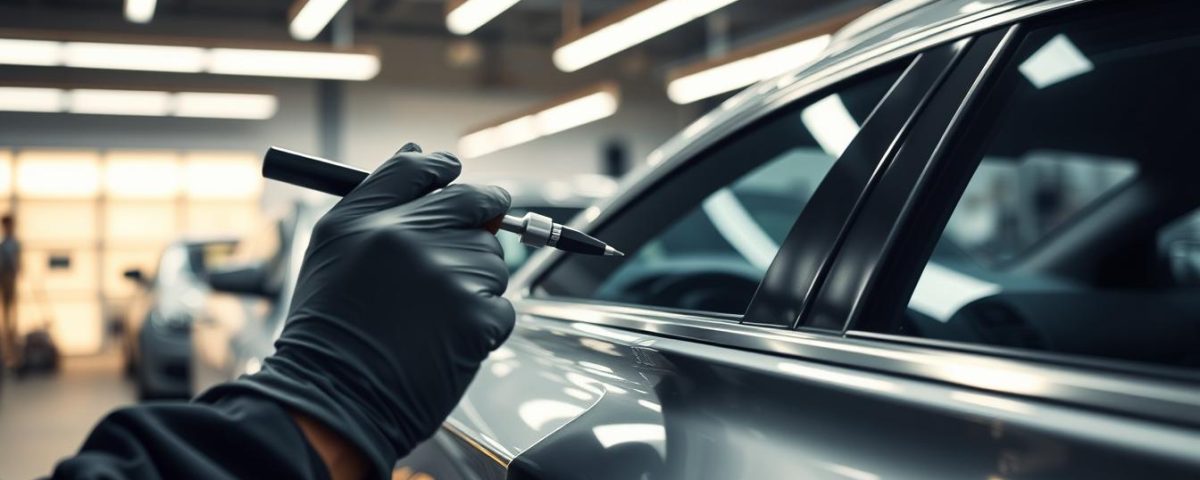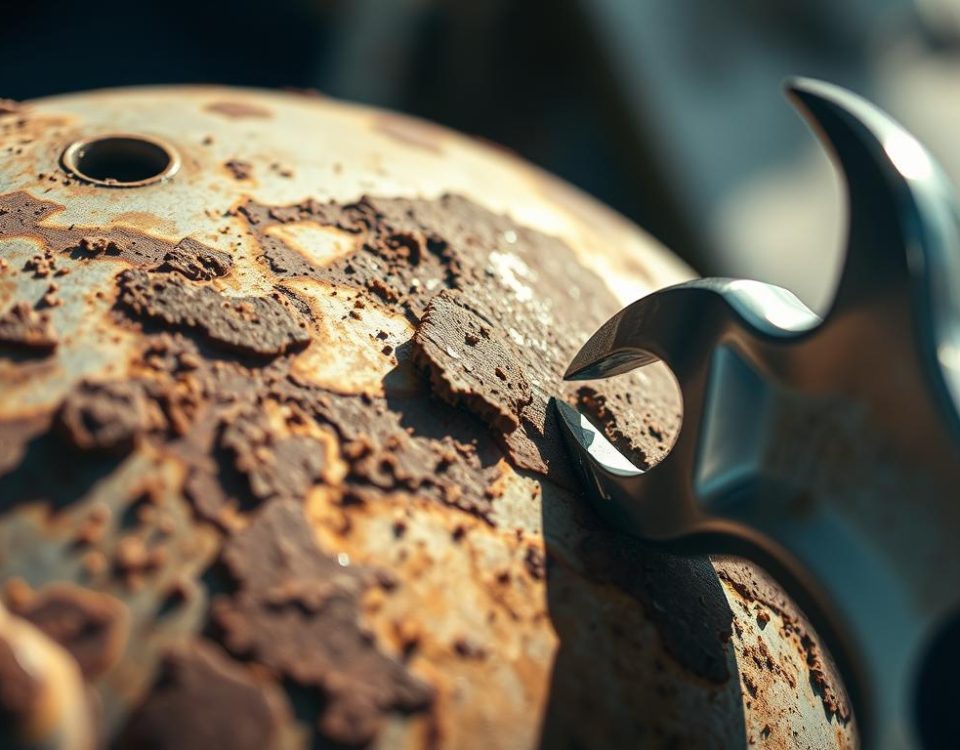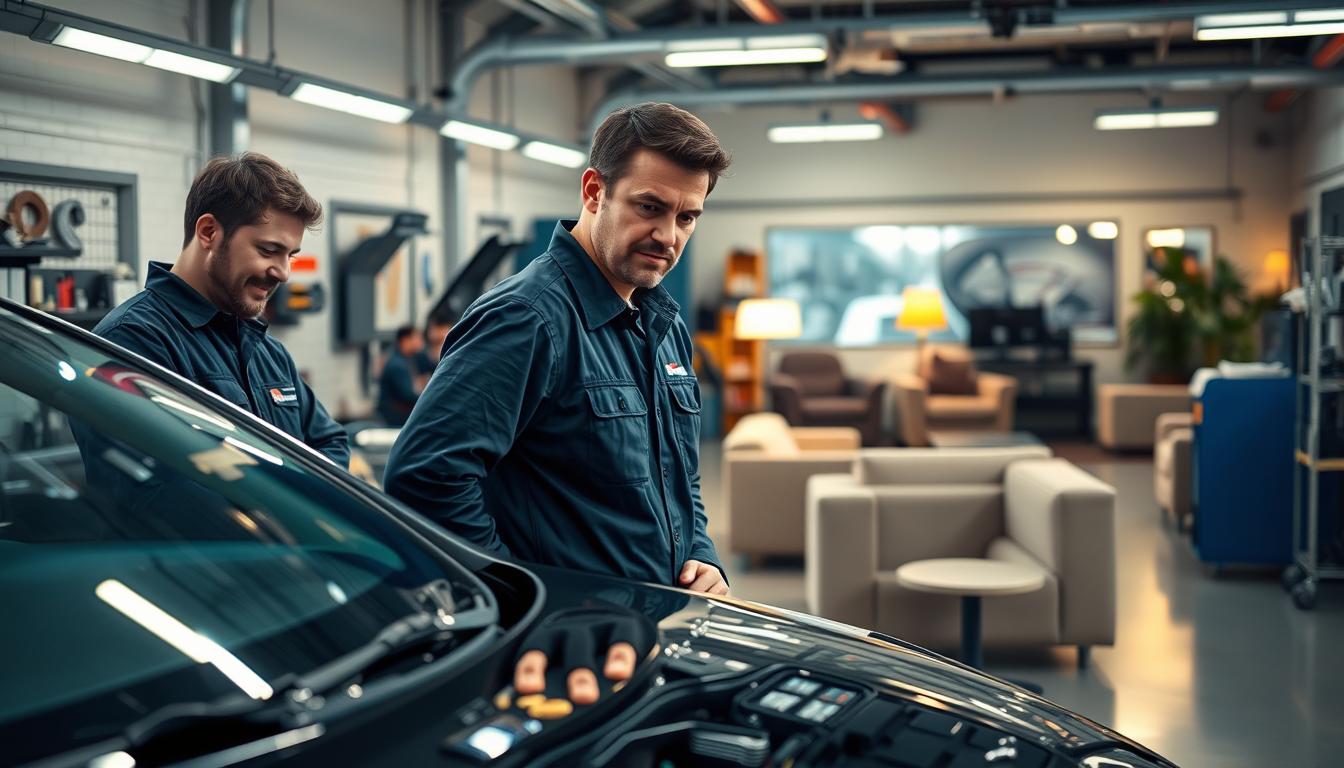
Trusting Your Repair Shop
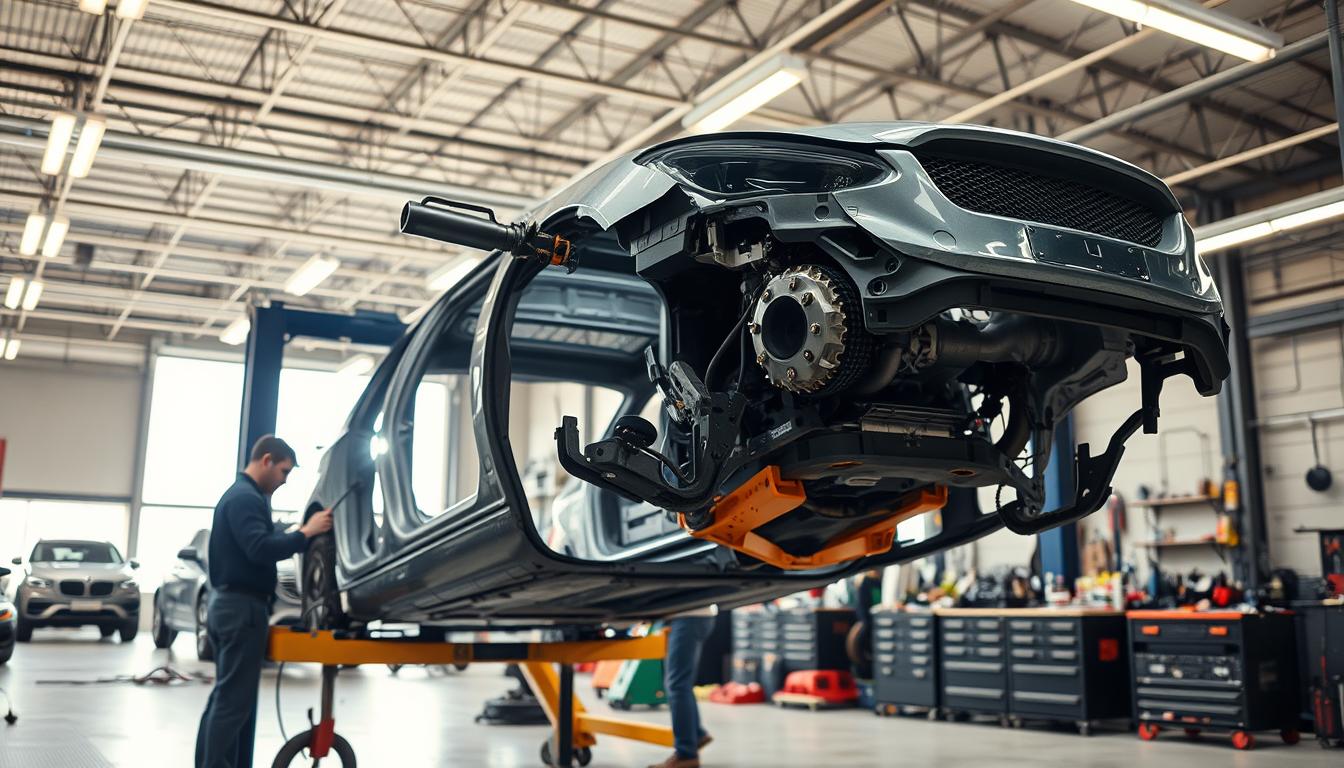
How to Fix a Bent Frame After a Collision
Ugly dents and dings can significantly detract from your car’s appearance, but restoring its good looks doesn’t necessarily require a lengthy and expensive visit to an auto body shop. At Miracle Body and Paint, with locations in San Antonio, car owners can explore alternative solutions.
Paintless dent repair is a technique that has gained popularity for its cost-effectiveness and time-saving benefits. This method can potentially restore your car’s original appearance without the need for extensive repairs.
Key Takeaways
- Paintless dent repair is a cost-effective solution.
- It saves time compared to traditional auto body repair methods.
- Miracle Body and Paint offers this service in San Antonio.
- The technique is beneficial for maintaining your car’s original appearance.
- It’s an alternative to lengthy and expensive auto body shop visits.
Understanding Paintless Dent Repair
When it comes to fixing minor dents and dings, paintless dent repair emerges as a highly effective solution. This method has revolutionized the auto body work industry by providing a way to restore vehicles to their original condition without the need for extensive repairs or repainting.
Paintless dent repair (PDR) is a sophisticated technique used to remove minor dents and dings from vehicles. It’s a method that preserves the factory paint, maintaining the vehicle’s original finish.
What Is Paintless Dent Repair?
Paintless dent repair is a process that involves massaging the metal back into its original shape using specialized tools. This technique is particularly effective for minor dents caused by hail, door dings, or minor collisions.
How Does It Work?
The process begins with a thorough assessment of the damage to determine the best approach. A skilled technician then uses specialized tools to access the damaged area from behind and gently push the metal back into place. This method requires great skill and precision, as the goal is to restore the metal to its original shape without damaging the paint.
The effectiveness of PDR lies in its ability to preserve the vehicle’s original paint job, avoiding the need for repainting or filling. This not only saves time but also maintains the vehicle’s original finish, which is a significant advantage in auto body work.
By understanding how paintless dent repair works, car owners can make informed decisions about the best way to address minor dents and dings on their vehicles. Whether it’s a door ding or a hail damage, PDR offers a cost-effective and efficient solution.
Advantages of Paintless Dent Repair
The advantages of Paintless Dent Repair are numerous, making it an attractive option for those seeking to maintain their vehicle’s integrity and appearance. This method offers a range of benefits that make it superior to traditional dent repair techniques in many cases.
Cost-Effective Solution
One of the primary advantages of Paintless Dent Repair is its cost-effectiveness. By eliminating the need for painting and using specialized tools to massage the metal back into its original shape, PDR significantly reduces the cost associated with dent repair. This method is particularly beneficial for car owners who have minor dings and dents, as it allows them to restore their vehicle’s appearance without the hefty price tag associated with traditional bodywork.
Time-Saving Benefits
Time is of the essence for many car owners, and PDR caters to this need by offering a quick turnaround. Unlike traditional dent repair, which can take days or even weeks to complete, Paintless Dent Repair can often be finished in a matter of hours. This is because PDR eliminates the need for lengthy processes like painting and drying, allowing vehicle owners to get back on the road much sooner.
Environmentally Friendly
In addition to being cost-effective and time-efficient, Paintless Dent Repair is also an environmentally friendly option. By avoiding the use of paints and other chemicals associated with traditional dent repair, PDR minimizes its environmental footprint. This aspect is particularly appealing to eco-conscious car owners who wish to reduce their impact on the environment while maintaining their vehicle.
Overall, the advantages of Paintless Dent Repair make it a compelling choice for car owners looking for a reliable, efficient, and environmentally friendly solution to minor dents and dings.
Common Types of Damage Suitable for PDR
When it comes to auto body work, Paintless Dent Repair (PDR) is a highly effective method for repairing certain types of damage. PDR is suitable for a variety of common issues that car owners face, making it a valuable solution for many.
Dents from Hailstorms
Dents caused by hailstorms are a common problem for car owners, especially in regions prone to severe weather conditions. PDR is particularly effective for repairing hail damage because it allows technicians to restore the vehicle’s body without the need for painting or replacing panels.
Door Dings and Minor Collisions
Door dings and minor collisions are another type of damage that can be effectively repaired using PDR. These types of incidents often result in small dents and dings that can be easily fixed without the need for extensive auto body work.
The key to successful PDR is that the paint is not chipped or cracked. As long as the paint remains intact, PDR can be used to restore the vehicle’s body to its original condition, saving car owners time and money.
When Is Paintless Dent Repair Not an Option?
While paintless dent repair (PDR) is a highly effective method for fixing minor dents, there are certain situations where it may not be the best solution. The suitability of PDR largely depends on the extent and nature of the damage.
Severe Dents or Cracks
PDR is generally not recommended for severe dents that have cracked or torn the metal. Such damage requires more extensive repair techniques, including bodywork and repainting, to restore the vehicle’s original condition.
- Dents with sharp creases or deep damage
- Cracked or torn metal
- Dents located near the edge of a panel
In these cases, attempting PDR could potentially cause further damage or not fully restore the vehicle’s surface.
Damaged Paint or Coating
If the dent has resulted in damaged paint or the coating is compromised, PDR alone may not be sufficient. PDR works by manipulating the metal from behind to remove the dent, but it doesn’t address issues with the paint or clear coat.
- If the paint is cracked or chipped, it may need to be touched up or repainted.
- Damaged coatings can expose the metal to the elements, potentially leading to rust.
In such scenarios, a combination of PDR and traditional repair methods, including painting, may be necessary to fully restore the vehicle.
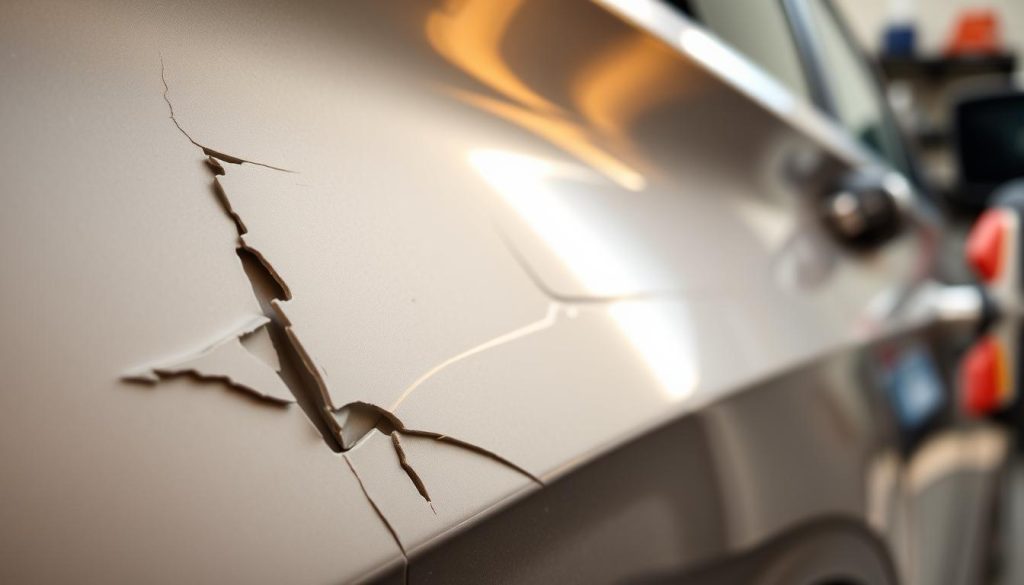
Understanding these limitations is crucial for setting realistic expectations and choosing the most appropriate repair method for your vehicle. If you’re unsure whether PDR is right for your car’s damage, consulting with a professional technician can provide clarity and guidance.
The Process of Paintless Dent Repair
The paintless dent repair process involves a thorough assessment and specialized techniques to restore your vehicle’s original shape without damaging the paint.
Initial Assessment
Before any repair work begins, a technician conducts an initial assessment to determine the extent of the damage and the best approach for repair. This step is crucial in identifying whether the dent is suitable for paintless dent repair.
During the assessment, the technician evaluates the size, location, and depth of the dent, as well as the type of metal and the presence of any paint damage. This information helps in deciding the most effective technique for removing the dent.
Dent Removal Techniques
Once the assessment is complete, the technician uses specialized tools to remove the dent. These tools are designed to massage the metal back into its original shape from the inside out.
The process involves a series of gentle manipulations that require great skill and precision. The technician works carefully to avoid causing further damage to the vehicle’s body.
- The use of specialized lighting helps technicians visualize the dent more clearly.
- Techniques may vary depending on the type of dent and the vehicle’s make.
- Technicians may use a variety of tools, including metal rods and pulling devices.
By combining a thorough initial assessment with skilled dent removal techniques, paintless dent repair offers an effective solution for many types of auto body damage.
Choosing a Qualified PDR Technician
A qualified PDR technician is essential for restoring your vehicle to its original condition. The process of paintless dent repair requires a high level of skill and precision, making the choice of technician critical.
Certifications and Training
When selecting a PDR technician, it’s crucial to consider their certifications and training. A reputable technician should have undergone comprehensive training in paintless dent repair techniques. Look for certifications from recognized organizations, as these indicate a level of competence and adherence to industry standards.
What to Look for in a Technician
Beyond certifications, there are several other factors to consider when evaluating a PDR technician. Experience is key; a technician with a proven track record is more likely to deliver high-quality results. Additionally, consider their reputation by reading reviews and asking for referrals. A good technician will also provide a warranty for their work, giving you peace of mind.
In conclusion, choosing the right PDR technician involves considering their certifications, training, experience, and reputation. By doing your research and selecting a qualified technician, you can ensure that your vehicle is restored to its original condition.
Frequently Asked Questions about PDR
As you consider paintless dent repair for your vehicle, you likely have several questions about the process. Paintless dent repair is a popular method for fixing minor dents without the need for painting, making it an attractive option for many car owners. Here, we’ll address some of the most common questions about PDR to help you make an informed decision.
How Long Does PDR Take?
The duration of paintless dent repair can vary depending on the size and complexity of the dent. Typically, minor dents can be repaired within a few hours, while more extensive damage may require a longer timeframe. Your technician will be able to provide a more accurate estimate after assessing the damage.
Is PDR Safe for My Car?
When performed by a qualified technician, paintless dent repair is a safe and effective method for removing dents without causing further damage to your vehicle. It’s essential to choose a reputable service provider to ensure the work is done correctly.
- PDR preserves the original paint and finish of your car.
- It eliminates the need for harsh chemicals used in traditional dent repair.
- The process is generally quicker than conventional methods.
Will My Car’s Value Be Affected?
Paintless dent repair is designed to restore your vehicle’s appearance to its original condition, thereby preserving its value. Unlike traditional repair methods that may involve repainting, PDR maintains the factory finish, which is a significant factor in maintaining your car’s resale value.
In conclusion, paintless dent repair addresses several common concerns car owners have when dealing with minor dents. By understanding the process, its safety, and its impact on your vehicle’s value, you can make a more informed decision about whether PDR is the right choice for your car.
Comparing PDR to Traditional Dent Repair
For car owners facing the dilemma of dent repair, understanding the differences between Paintless Dent Repair and traditional methods is crucial. Both techniques have their advantages and disadvantages, which are essential to consider when deciding the best approach for your vehicle.
Cost Comparisons
One of the primary factors car owners consider when deciding on a dent repair method is the cost. Paintless Dent Repair is often more cost-effective than traditional dent repair because it eliminates the need for painting and filling. Here are some key cost comparisons:
- Lower Labor Costs: PDR typically requires less labor since it involves manipulating the metal back into its original shape without the need for additional materials.
- No Paint Costs: Since PDR doesn’t require repainting the vehicle, car owners can save on paint and coating costs.
- Potential for Higher Costs in Complex Cases: While PDR is generally cheaper, complex dents that are not suitable for PDR might end up being more expensive if they require traditional repair methods.
Time and Convenience
Besides cost, the time taken to repair dents and the convenience offered by the repair method are also crucial. Paintless Dent Repair is often quicker because it involves a more straightforward process. Here are some points to consider:
- Faster Turnaround Time: PDR can often be completed in a matter of hours, depending on the extent of the damage.
- Convenience: Since PDR doesn’t require painting, it eliminates the need for waiting for paint to dry or scheduling additional appointments for painting.
- Less Inconvenience to Vehicle Use: With PDR, your vehicle is available for use sooner, minimizing downtime.
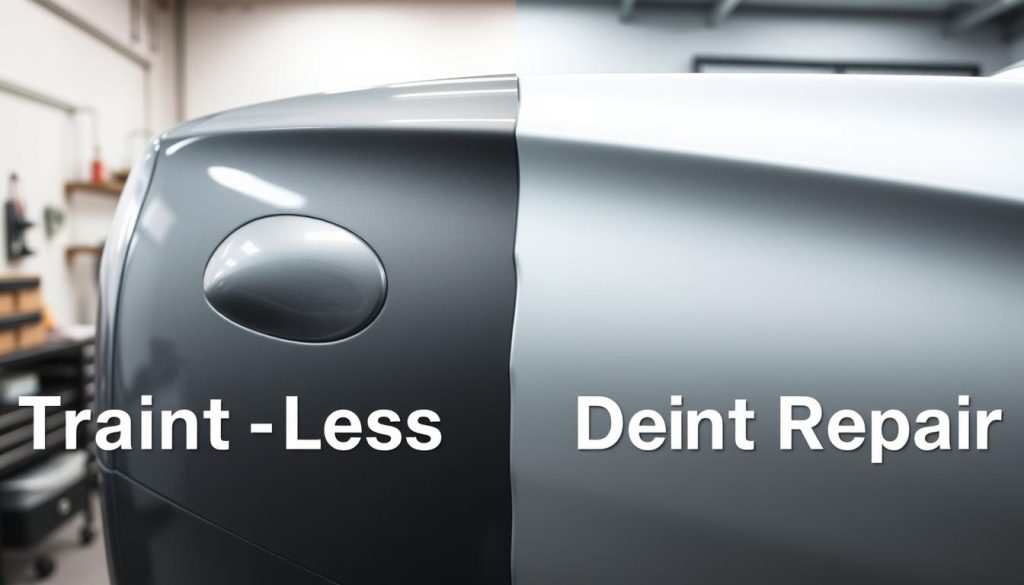
Customer Testimonials and Experiences
The success of our paintless dent repair services is best reflected in the words of our satisfied customers. Our team takes pride in delivering high-quality auto body work that meets the highest standards.
Success Stories
Many of our customers have been thrilled with the results of our paintless dent repair services. For instance, John Doe, a long-time customer, praised our work after we removed a large dent from his car’s door: “I was amazed at how well the dent was removed. The service was quick, and the price was reasonable.”
Similarly, Jane Smith was delighted with our service after a hailstorm damaged her vehicle. “The team did an excellent job repairing the dents without affecting the paint. I highly recommend their services.”
Common Concerns
While our customers are generally very satisfied, some have expressed concerns about the process. One common question is about the durability of the repairs. We assure our customers that paintless dent repair is a long-lasting solution that can withstand normal wear and tear.
Another concern is about the cost. We understand that budget is a crucial factor, which is why we offer competitive pricing without compromising on quality. Our customers appreciate the value for money that our services provide.
- Quick turnaround times
- Competitive pricing
- High-quality repairs
Tips for Preventing Future Dents
While paintless dent repair is an effective solution, preventing dents from happening in the first place is always the best approach. By adopting a few simple habits and using the right protective gear, you can significantly reduce the risk of damage to your vehicle.
Parking Practices
One of the most effective ways to prevent dents is by being mindful of your parking practices. Choosing the right parking spot can make a big difference. Opt for areas that are less crowded and have fewer potential hazards, such as shopping carts or other vehicles that could potentially ding your car.
- Park in designated parking spaces to minimize the risk of door dings.
- Avoid parking near areas with high foot traffic or where other vehicles are likely to be moving in tight spaces.
- Consider using parking sensors or cameras to help gauge distances and avoid collisions.
Protective Accessories
In addition to careful parking, using protective accessories can provide an extra layer of defense against dents. There are various products available that can help protect your vehicle from damage.
- Use a car cover to protect your vehicle from hail or other environmental hazards.
- Install door edge guards to prevent dings and dents from other car doors.
- Consider applying a protective film to high-risk areas, such as the hood or roof.
By combining smart parking practices with the use of protective accessories, you can significantly reduce the likelihood of needing dent repair or paintless repair services in the future. Taking these proactive steps not only helps maintain your car’s appearance but also preserves its value over time.
Cost Considerations for Paintless Dent Repair
When considering paintless dent repair (PDR) for your vehicle, understanding the cost is crucial. The cost of PDR can vary based on several factors, including the size and location of the dent, as well as the technician’s expertise.
Average Pricing
The average cost for PDR can range from $50 to $200 per dent, depending on the complexity of the repair. For minor dents and dings, the cost tends to be on the lower end of this spectrum, while larger or more intricate repairs can be more expensive. It’s essential to get a quote from a qualified technician to understand the exact cost for your vehicle’s specific needs.
Insurance Coverage Options
In many cases, PDR is covered under comprehensive insurance policies. It’s advisable to check with your insurance provider to determine the extent of your coverage. Some insurance companies may cover PDR as part of their auto body work coverage, potentially saving you out-of-pocket expenses.
Understanding your insurance options can help you make an informed decision about whether PDR is the right choice for your vehicle.
Conclusion: Is PDR Right for You?
Evaluating your car’s needs is crucial in determining whether paintless dent repair is the right solution. If your vehicle has minor dents or dings without damaged paint, PDR could be an ideal choice.
Assessing Your Vehicle’s Condition
Consider the size, location, and depth of the dents. PDR is most effective for small to medium-sized dents. If the paint is intact, PDR can restore your car’s appearance without the need for costly repainting.
Making an Informed Decision
When deciding on dent repair, consider factors like cost, time, and the overall condition of your vehicle. Paintless dent repair offers a cost-effective and time-saving solution. For expert PDR services, consider consulting a professional technician from a reputable shop like Miracle Body and Paint.
Miracle Body and Paint offers top-notch PDR services, ensuring your vehicle looks its best. With their expertise, you can trust that your car is in good hands. Contact them today to schedule a consultation and restore your vehicle’s original appearance.


